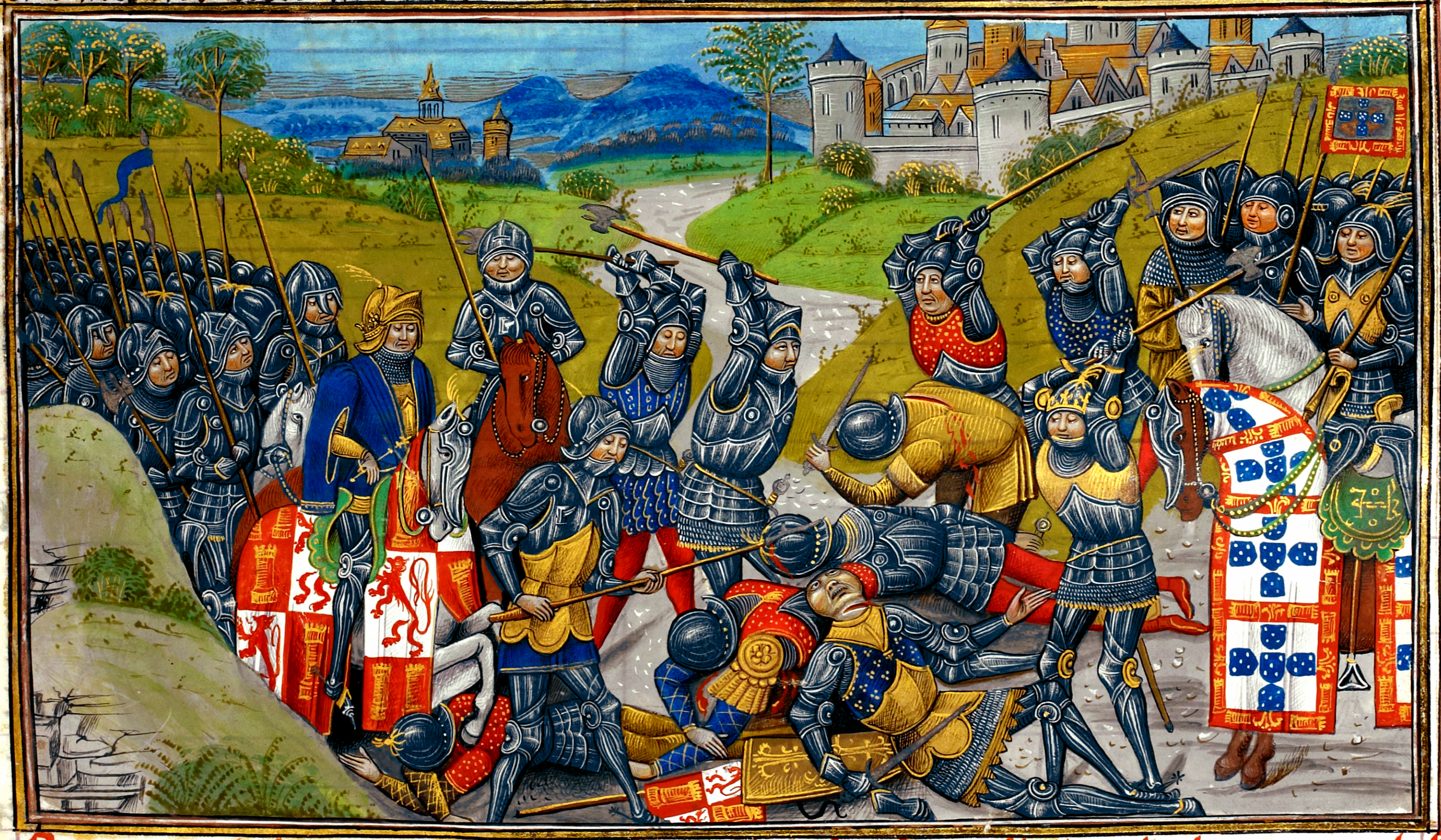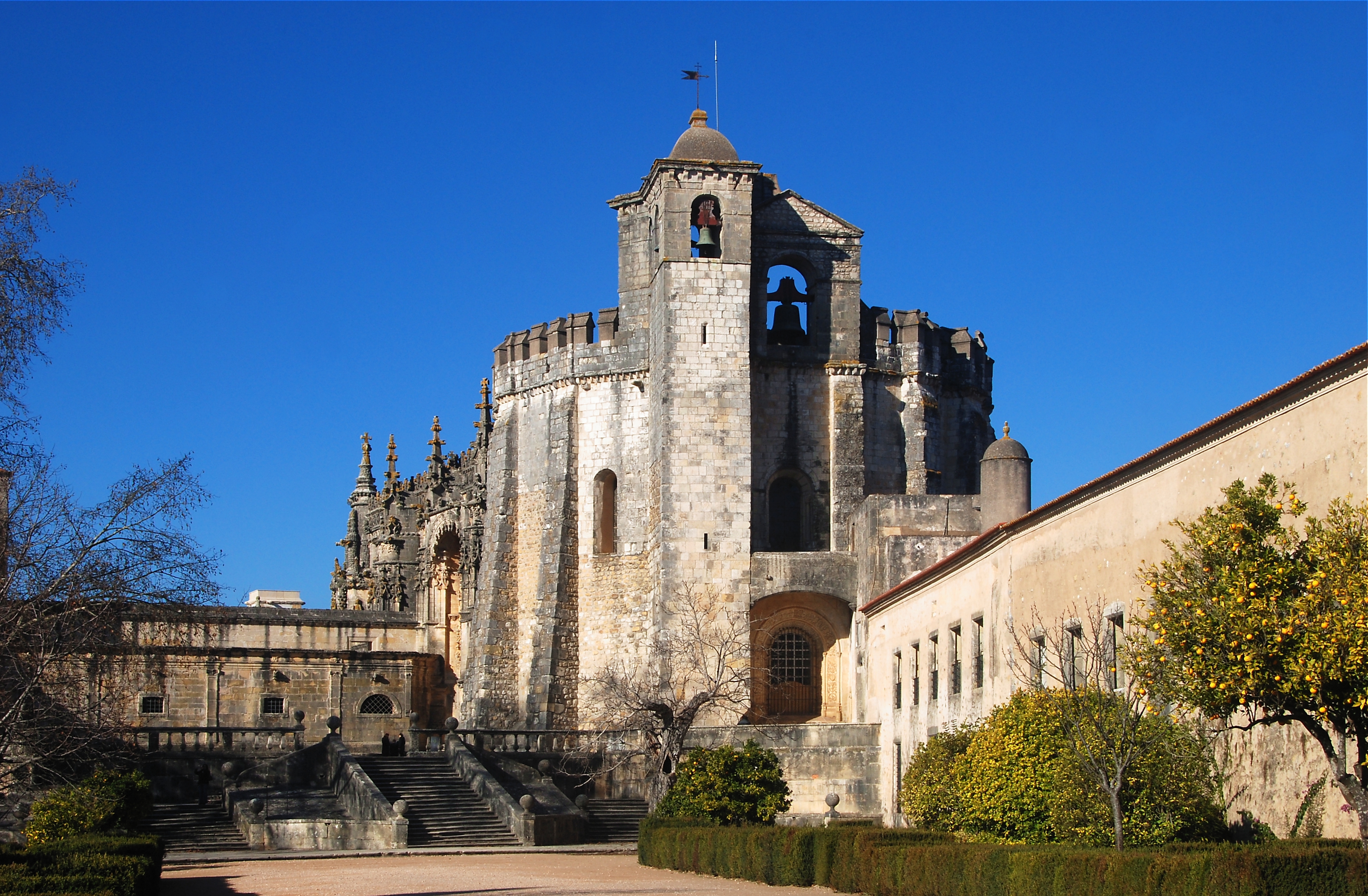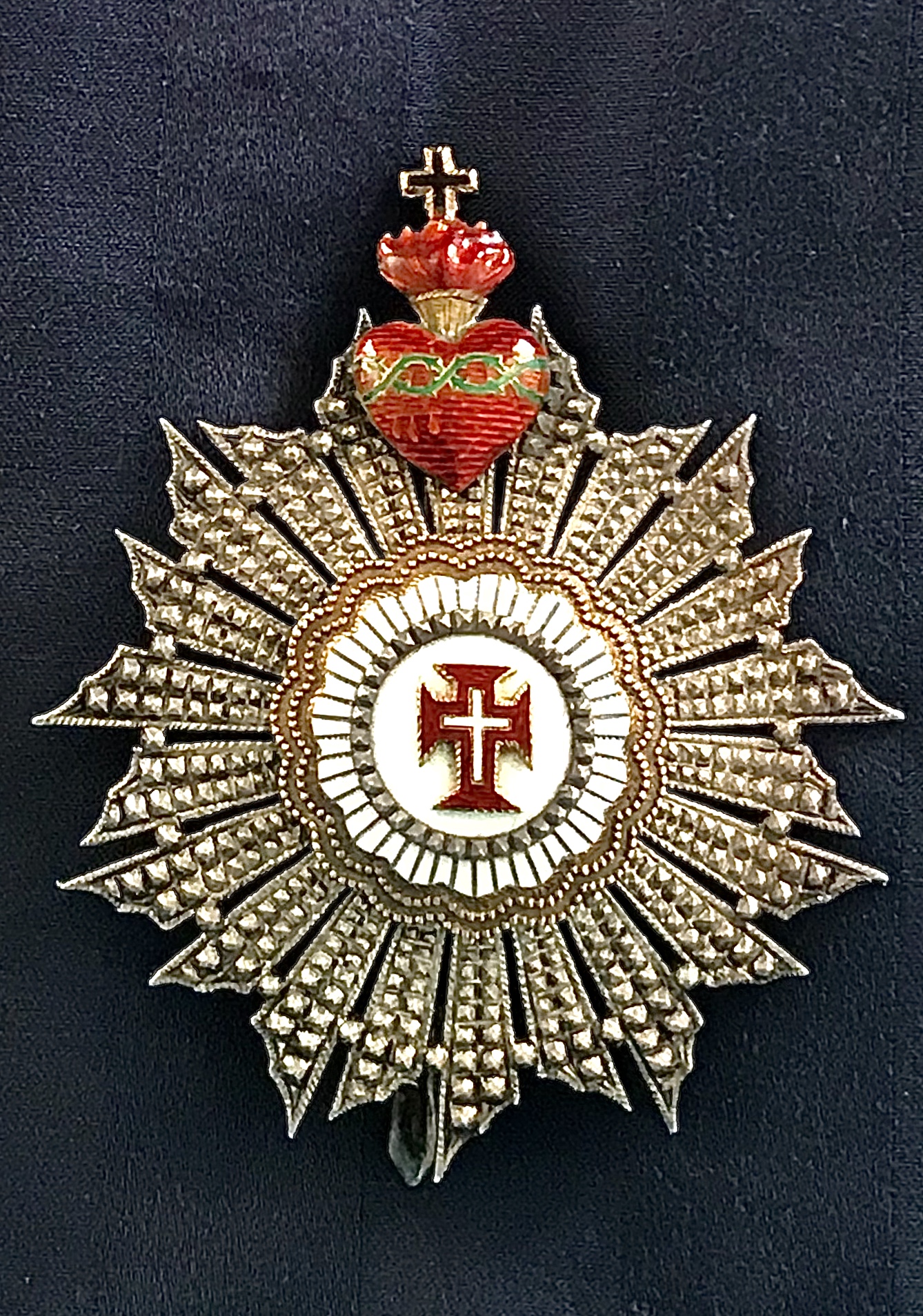|
Catherine, Duchess Of Braganza
Infanta Catherine of Portugal, Duchess of Braganza by marriage (; , 18 January 1540 – 15 November 1614) was a Portuguese '' infanta'' (princess) claimant to the throne during the Portuguese succession crisis of 1580. Biography Background Catherine was the second daughter of Duarte, Duke of Guimarães (sixth son of Manuel I of Portugal) and Isabel of Braganza. On 6 December 1563, she married João I, Duke of Braganza, head of the most powerful aristocratic house in Portugal. The two were first cousins. Succession crisis Following the death of young King of Sebastian of Portugal in the Battle of Alcácer Quibir, his great-uncle Henry I of Portugal succeeded to the throne. Elderly and bound to ecclesiastical vows, Henry could not produce a direct heir, leading to much deliberation over his successor during his short reign. Catherine was Henry's preferred successor, but because of her sex, the powerful influence of Philip II, and the unpopularity of her husband, she fa ... [...More Info...] [...Related Items...] OR: [Wikipedia] [Google] [Baidu] |
House Of Aviz
The House of Aviz (Portuguese language, Portuguese: ''Casa de Avis'' ), also known as the Joanine Dynasty (''Dinastia Joanina''), was a dynasty of Portuguese people, Portuguese origin which flourished during the Portuguese Renaissance, Renaissance and the period of the Portuguese discoveries, when History of Portugal (1415–1578), Portugal expanded its power globally. The house was founded by King John I of Portugal, Grand-Master of the Order of Aviz and illegitimate son of King Peter I of Portugal, Pedro I (of the Portuguese House of Burgundy), who ascended to the throne after successfully pressing his claim during the 1383–1385 Portuguese interregnum. Aviz monarchs would rule Portugal through the Age of Discovery, establishing Portugal as a global power following the creation of the Portuguese Empire. In 1494, Pope Alexander VI divided the world under the dominion of Portugal and Spain with the Treaty of Tordesillas. The House of Aviz has produced numerous prominent figures ... [...More Info...] [...Related Items...] OR: [Wikipedia] [Google] [Baidu] |
Philip II Of Spain
Philip II (21 May 152713 September 1598), sometimes known in Spain as Philip the Prudent (), was King of Spain from 1556, King of Portugal from 1580, and King of Naples and List of Sicilian monarchs, Sicily from 1554 until his death in 1598. He was also ''jure uxoris'' King of England and List of Irish monarchs, Ireland from Wedding of Mary I of England and Philip of Spain, his marriage to Queen Mary I in 1554 until her death in 1558. Further, he was Duke of Milan from 1540. From 1555, he was Lord of the Seventeen Provinces of the Habsburg Netherlands, Netherlands. The son of Emperor Charles V and Isabella of Portugal, Holy Roman Empress, Isabella of Portugal, Philip inherited his father's Spanish Empire in 1556, and succeeded to the Kingdom of Portugal, Portuguese throne in 1580 following a dynastic crisis. The Spanish conquests Spanish conquest of the Inca Empire, of the Inca Empire and of the Philippines, named in his honor by Ruy López de Villalobos, were completed during h ... [...More Info...] [...Related Items...] OR: [Wikipedia] [Google] [Baidu] |
Iberian Union
The Iberian Union is a historiographical term used to describe the period in which the Habsburg Spain, Monarchy of Spain under Habsburg dynasty, until then the personal union of the crowns of Crown of Castile, Castile and Crown of Aragon, Aragon, incorporated the Kingdom of Portugal under the same terms, that existed between 1580 and 1640 and brought the entire Iberian Peninsula except Andorra, as well as Portuguese Empire, Portuguese and Spanish Empire, Spanish overseas possessions, under the Spanish Habsburg monarchs Philip II of Spain, Philip II, Philip III of Spain, Philip III, and Philip IV of Spain, Philip IV. The union began after the Portuguese succession crisis of 1580 and the ensuing War of the Portuguese Succession, and lasted until the Portuguese Restoration War, during which the House of Braganza was established as Portugal's new ruling dynasty with the acclamation of John IV of Portugal, John IV as the new king of Portugal. As a personal union, the Kingdom of Portug ... [...More Info...] [...Related Items...] OR: [Wikipedia] [Google] [Baidu] |
King John IV Of Portugal
'' Dom'' John IV (; 19 March 1604 – 6 November 1656), also known by the Portuguese as John the Restorer (), was the King of Portugal from 1640 until his death in 1656. He restored the independence of Portugal from Habsburg Spanish rule by terminating the 60-year-old Iberian Union in which Portugal and Spain shared the same monarch, and by establishing the House of Braganza on the Portuguese throne. Before becoming king, he was John II, the 8th Duke of Braganza. He was the grandson of Catherine, Duchess of Braganza, a claimant to the crown during the Portuguese succession crisis of 1580. On the eve of his death in 1656, the Portuguese Empire was at its territorial zenith, spanning the globe. Early life John IV was born at Vila Viçosa and succeeded his father Teodósio II as Duke of Braganza when the latter died insane in 1630. He married Luisa de Guzmán (1613–66), the eldest daughter of Juan Manuel Pérez de Guzmán, 8th Duke of Medina Sidonia, in 1633. John was desc ... [...More Info...] [...Related Items...] OR: [Wikipedia] [Google] [Baidu] |
Tomar
Tomar (), also known in English as Thomar (the ancient name of Tomar), is a Portugal, Portuguese city and a municipality in the historical Ribatejo Portuguese Provinces of Portugal, province, and in Santarém District, Santarém district. The town proper has a population of about 20,000. The municipality population in 2011 was 40,677, in an area of . The town of Tomar was created inside the walls of the Convento de Cristo, constructed under the orders of Gualdim de Pais, the fourth Grand master (order), Grand Master of the Knights Templar in Portugal in the late 12th century. Tomar was the last Templar town to be commissioned for construction and one of Portugal's historical jewels. The town was especially important in the 15th century when it was a center of Portuguese overseas expansion under Henry the Navigator, the Grand Master of the Order of Christ (Portugal), Order of Christ, successor organization to the Knights Templar in Portugal. Geography Tomar lies in the most fe ... [...More Info...] [...Related Items...] OR: [Wikipedia] [Google] [Baidu] |
War Of The Portuguese Succession
The War of the Portuguese Succession, a result of the extinction of the Portuguese royal line after the Battle of Alcácer Quibir and the ensuing Portuguese succession crisis of 1580, was fought from 1580 to 1583 between the two main claimants to the Portuguese throne: António, Prior of Crato, proclaimed in several towns as King of Portugal, and his first cousin Philip II of Spain, who eventually succeeded in claiming the crown, reigning as Philip I of Portugal. Cardinal-King The Cardinal Henry, great-uncle of Sebastian I of Portugal, became ruler in the immediate wake of Sebastian's death. Henry had served as regent for Sebastian after 1557, and succeeded him as King after the disastrous Battle of Alcácer Quibir in 1578. Henry renounced his clerical offices and sought to take a bride for the continuation of the Aviz dynasty, but Pope Gregory XIII, affiliated with the Habsburgs, did not release him from his vows. The Cardinal-King died two years later, without having a ... [...More Info...] [...Related Items...] OR: [Wikipedia] [Google] [Baidu] |
Teodósio II, Duke Of Braganza
Teodósio II, 7th Duke of Braganza (28 April 1568 – 29 November 1630) was a Portuguese nobleman and father of João IV of Portugal. He is known for his allegiance to King Philip I of Portugal. Biography As a child, Teodósio was brought to the court and made page to the king Sebastian I of Portugal. The king was very fond of him and in 1578 insisted on taking him to Africa in the expedition against the king of Morocco. This military campaign was doomed. During the ill-fated battle of Alcácer Quibir, Teodósio remained at the side of his king until the situation become extremely dangerous. Then, Sebastian ordered servants to take the ten-year-old child to safety behind the lines. The young man was not happy to be set aside and ran away at the first opportunity. Teodósio mounted a horse and went to the front lines of the battle, pursued by very scared servants. Eventually, like many others, he was wounded and taken prisoner. Back in Portugal, his father João went mad with gr ... [...More Info...] [...Related Items...] OR: [Wikipedia] [Google] [Baidu] |
Diego, Prince Of Asturias
Diego, Prince of Asturias and Portugal (Diego Felix; 15 August 1575 – 21 November 1582) was the fourth son of Philip II of Spain and his third son by his fourth wife, Anna of Austria. Early life At the time of his birth, Diego's elder brother, Prince Ferdinand, was still the heir-apparent. On the death of Ferdinand in 1578, Diego became heir-apparent to the throne. He was formally invested as Prince of Asturias on 1 March 1580 by the Courts in Madrid. The poet Cristóbal de Virués dedicated a sonnet to the new Prince, where he proposed that Diego follow the steps of his father.Freiherr von Münch: ''Book for Latin and English literature'', Ferd. Dümmler, 1860, p.159. In 1580, his father became king of Portugal as well, making Diego heir-apparent of that realm also. His mother, Anna, died during a trip to their new kingdom. Diego and his siblings remained in Madrid under the care of their half-sisters Isabella Clara Eugenia and Catherine Michelle. The letters of P ... [...More Info...] [...Related Items...] OR: [Wikipedia] [Google] [Baidu] |
India
India, officially the Republic of India, is a country in South Asia. It is the List of countries and dependencies by area, seventh-largest country by area; the List of countries by population (United Nations), most populous country since 2023; and, since its independence in 1947, the world's most populous democracy. Bounded by the Indian Ocean on the south, the Arabian Sea on the southwest, and the Bay of Bengal on the southeast, it shares land borders with Pakistan to the west; China, Nepal, and Bhutan to the north; and Bangladesh and Myanmar to the east. In the Indian Ocean, India is near Sri Lanka and the Maldives; its Andaman and Nicobar Islands share a maritime border with Thailand, Myanmar, and Indonesia. Modern humans arrived on the Indian subcontinent from Africa no later than 55,000 years ago., "Y-Chromosome and Mt-DNA data support the colonization of South Asia by modern humans originating in Africa. ... Coalescence dates for most non-European populations averag ... [...More Info...] [...Related Items...] OR: [Wikipedia] [Google] [Baidu] |
Order Of Christ (Brazil)
The Imperial Order of Our Lord Jesus Christ (), often simply named Order of Christ, is an order of chivalry instituted by emperor Pedro I of Brazil on 7 December 1822, on the basis of the Portuguese Order of Christ founded by King Dom Dinis and Pope John XXII in 1316–1319. The order was used to award persons for exceptional services that resulted in notable and proven utility to religion (Roman Catholicism), to humanity and the state. Knights of the Order of Christ were part of the untitled nobility of the Empire of Brazil. On 22 March 1890, the order was cancelled as national order by the interim government of United States of Brazil. However, since the deposition in 1889 of the last Brazilian monarch, Emperor Pedro II, the order is claimed as a house order, being awarded by the heads of the House of Orleans-Braganza, pretenders to the defunct throne of Brazil. The current Brazilian Imperial Family is split into two branches, Petrópolis and Vassouras, and the Grand ... [...More Info...] [...Related Items...] OR: [Wikipedia] [Google] [Baidu] |
Brazil
Brazil, officially the Federative Republic of Brazil, is the largest country in South America. It is the world's List of countries and dependencies by area, fifth-largest country by area and the List of countries and dependencies by population, seventh-largest by population, with over 212 million people. The country is a federation composed of 26 Federative units of Brazil, states and a Federal District (Brazil), Federal District, which hosts the capital, Brasília. List of cities in Brazil by population, Its most populous city is São Paulo, followed by Rio de Janeiro. Brazil has the most Portuguese-speaking countries, Portuguese speakers in the world and is the only country in the Americas where Portuguese language, Portuguese is an Portuguese-speaking world, official language. Bounded by the Atlantic Ocean on the east, Brazil has a Coastline of Brazil, coastline of . Covering roughly half of South America's land area, it Borders of Brazil, borders all other countries and ter ... [...More Info...] [...Related Items...] OR: [Wikipedia] [Google] [Baidu] |
Maria Of Portugal, Hereditary Princess Of Parma
Infanta Maria of Guimarães (12 August 1538 – 9 July 1577) was a Portuguese infanta, daughter of Infante Duarte, Duke of Guimarães (son of King Manuel I of Portugal), and Isabel of Braganza. She married Marriage, also called matrimony or wedlock, is a culturally and often legally recognised union between people called spouses. It establishes rights and obligations between them, as well as between them and their children (if any), and b ... Alessandro Farnese, Duke of Parma and Piacenza on 11 November 1565. She was Hereditary Princess of Parma by marriage. Issue Ancestry References 1538 births 1577 deaths Portuguese infantas Hereditary princesses of Parma House of Aviz Nobility from Lisbon House of Farnese Burials at the Sanctuary of Santa Maria della Steccata 16th-century Portuguese people Mothers of Italian monarchs {{Portugal-royal-stub ... [...More Info...] [...Related Items...] OR: [Wikipedia] [Google] [Baidu] |





